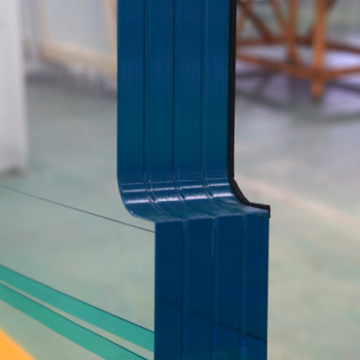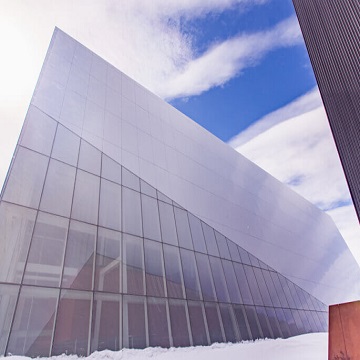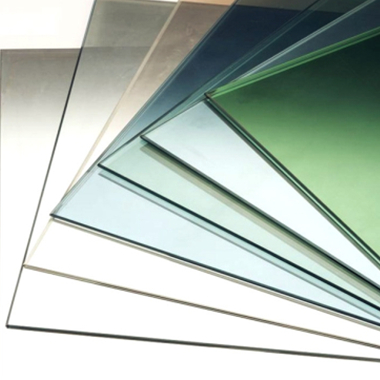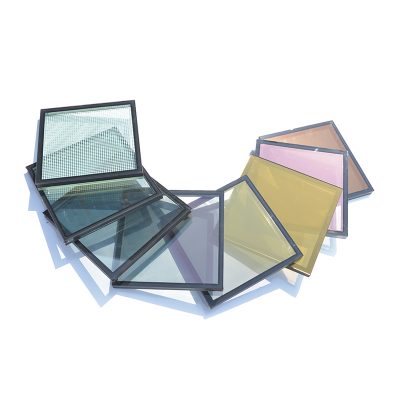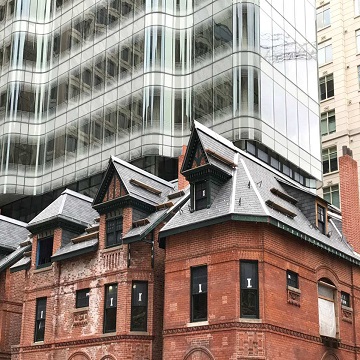What Is Safety Glass?
Safety glass is glass that is specifically designed to be less likely to break, and less prone to inflicting injury when it breaks. It also includes glass that is manufactured for strength or fire resistance.
What does safety glass look like?
Look closely at the pane and try to spot dimples, warping or bending. Such imperfections strongly suggest the glass is of the toughened safety variety, and occur during the heating process: Due to the very high temperatures required in the manufacturing process, tongs are used. These tongs leave marks on the glass.
What is a safety glass used for?
Areas of a home that are prone to accidents are required to be fitted with a Grade A safety glass. The use of safety glass reduces the risk of injury as it is significantly harder to break and is designed so it won't fracture into dangerous shards if broken.
Making Glass Stronger
Two types of safety glass are heat-strengthened and tempered. Heat-strengthened glass is cooled at a rate faster than regular annealed glass. Tempered glass, in turn, is cooled at a faster rate than heat-strengthened glass. Another way to strengthen glass is to use more than one lite of glass in the application.
Laminated glass consists of two or more lites of glass joined by a layer of plastic. Heat-strengthened glass is made by heating annealed glass uniformly, then cooling it at a slow rate. The rate of cooling directly affects the strength of glass. The regular process of cooling – or annealing – float glass results in a slow rate. Stronger glass can be produced by changing the rate of cooling. Heat-strengthened glass is about twice as strong as regular annealed glass of the same size and thickness, which makes it more resistant to wind loading and impacts. When it breaks, heat-strengthened glass fractures into large, jagged pieces similar to annealed glass. Heat-strengthened glass is generally used in high-rise buildings to help the glass resist thermal stress. Because heat-strengthened glass fractures into large jagged pieces, it does not qualify as a safety glazing material. All building codes require safety glazing for shower doors, commercial doors and storefronts for safety purposes.
What Is Tempered Glass?
Tempered glass, (also known as toughened glass) is made by heating annealed glass uniformly. The annealed glass is then cooled rapidly by blowing air uniformly onto both surfaces at the same time. This is known as air quenching. Rapid cooling increases the compression forces on the surface and the tension forces inside the glass. Tempered glass can be from 1/8" to 3/4" thick. Tempered glass is about four times stronger than a lite of annealed glass of the same size and thickness. The only characteristic of the annealed glass affected by tempering is its bending or tensile strength. Tempering increases the tensile strength of glass. This makes tempered glass better able to resist the forces caused by heat, wind and impact. Tempering does not change:
The color, chemical composition, or light transmission characteristics of the annealed glass
Its compression strength (the ability of the glass to resist crushing forces)
The rate at which the glass conducts and transmits heat
The rate at which the glass expands when heated
The stiffness of the glass
Benefits of Tempered Glass
Tempered glass offers greater strength against deflection and better wind resistance than heat-strengthened glass. Tempering increases the ability of glass to survive the impact of objects that may strike the building. When tempered glass does break, it shatters into small cubes, reducing the likelihood of serious injury on impact. Therefore, it qualifies as a safety glazing material. Tempering increases a lite’s edge strength, so it is specified when designers anticipate high thermal stresses. Many large storefront windows are tempered glass, which can be identified by a “bug,” a permanent label in the corner of the window. Tempered glass cannot be cut, drilled or edged.
What Is Wire Glass?
Wire glass is made by feeding a welded wire net of a particular design into the molten glass just before it enters the rollers. The wire does not add to the strength of the glass but it does hold the lite (a cut piece of glass) in the window sash if it shatters. Wire glass is used in fire-rated windows and doors because it meets most fire codes. For these applications, all the wires must be embedded in the glass. However, even though it meets fire codes, wired glass is not strengthened glass. In fact, it has only one half the strength of annealed glass of the same thickness. In addition, wired glass cannot be tempered.
What Is Laminated Glass?
Laminated glass, sometimes called “lami,” is made by placing a layer of polyvinyl butyral (PVB) between two or more glass lites. The PVB can be clear or tinted and commonly varies in thickness from .015" to .090", but it can be as thick as .120" for special applications. The entire unit is then fused under heat and pressure in a special oven called an autoclave. The laminating process can be performed on clear, tinted, reflective, heat-strengthened or tempered glass.
Laminated glass is used in safety glazing applications. However, it has many other applications, such as burglar resistance, sound reduction, sloped glazing and space enclosures. Laminated glass is used as the inboard lite in skylights. By varying the thickness and color of the PVB, laminated glass can be used to reduce the transmission of solar energy, control glare, and screen out ultraviolet radiation, similar to reflective glass.
Benefits of Laminated Glass
When laminated glass breaks, the glass particles adhere to the PVB and do not fly or fall. Certain combinations of glass and PVB thicknesses qualify as safety glazing materials under the health and safety standards set by the American National Standards Institute (ANSI). A vehicle windshield is made of a layer of laminate sandwiched between two layers of glass. The blue tint across the top of a windshield is actually the edge of the laminate layer. Laminate gives windshields their extra strength to help a vehicle maintain its structural integrity during a crash. When the Ford Model T automobile was first introduced, the glass windscreen was an optional extra feature. Today, most automotive safety experts rank the windshield as the third most important safety component in today’s cars and trucks, according to the Car Care Council, which sponsors National Car Care Month. Seatbelts and airbags rank first and second. All three components are part of what automotive engineers refer to as a vehicle’s safety restraint system (SRS).
What Is Bullet-Resistant Glass?
Bullet-resistant glass is made of several layers of laminate and glass. In between the glass is a polycarbonate material that absorbs the energy of a bullet. The thicker the glass, the higher impact it can withstand. There is even one-way bulletproof glass that enables the victim to shoot back, but not to be struck.
How do I Know If My Glass is Toughened/Tempered Safety Glass?
Examine Its Edges. ...
Keep an Eye for the Bug. ...
Look for Imperfections. ...
View the Glass Through Polarized Lenses. ...
Score a Line (Only If You Plan on Cutting It Away)
Wallkingdon Glass offers not only one of the broadest selections of architectural, decorative, and specialty glass, but we also offer services that allow our clients to do more with glass. If you want to get high quality glass and the cost effective solutions while keeping quality to highest level, send an email to enquiry@wallkingdonglass.com, we will have the valuable input and creativity of glass design experts to help you.


